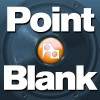Point Blank offers an in-depth guide to creating a Deep House Arpeggiated Chord Pattern Generator in Ableton Live (Video)

Point Blank Online School brings you weekly fresh nuggets of music production advice courtesy of their team of pro producer course developers and tutors. This week Ski Oakenfull takes the reigns with an excerpt taken from Point Blank's new online Electronic Music Composition course (EMC), developed and taught by Ski.
"Taking inspiration from Deep House don and Freerange Records label boss Jimpster, I wanted to have a go at recreating a musical pattern I heard recently on one of his tracks. I loved the way the rhythm of the pattern lay on the off beat, so I set about trying to figure a way to achieve this in Ableton.''
Watch Deep House Arpeggiated Chord Pattern Generator in Ableton Live on YouTube
One of Live's major assets are its MIDI Effects which, when combined together in series, can perform some powerful MIDI processing. So for this project Ski used the following MIDI devices:
- Arpeggiator: This allows you to hold down any number of keys, and have Ableton build up a Rhythmic pattern (Arpeggio) using these notes. The important thing in this example is that Ski had to set the rate to 'free mode' to get that offbeat rhythm.
- Chord: This allows you to play a single note on the keyboard, and have Ableton add extra notes allowing you to build up chords. In this example Ski programmed a Minor Triad (+3 & +7).
- Scale: This basically allows you to play any notes on the keyboard but force the output to play only notes from a specified scale. This was used to take the output of the Chord device and force it to play only notes in D Minor.
"My aim for this project was to be able to hold down one note on the keyboard, and get Ableton to play the entire pattern. To achieve this I used the following combination of MIDI Devices: Chord (playing 5 notes) -> Arpeggiator -> Chord (playing Minor Triad) -> Scale (playing Notes from D Minor)"
You can watch more free tutorials on their sample course page.






